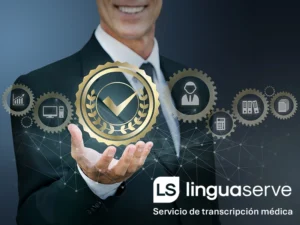In the world of healthcare, precision is everything, especially when it comes to clinical documentation. Accurate and timely medical records are essential for delivering quality care, improving communication among professionals, and meeting the stringent demands of regulatory compliance. That’s where medical transcription services come in, playing a crucial role in ensuring the smooth operation of healthcare facilities by converting spoken clinical observations into well-structured written documents.
In this article, we’ll take a closer look at why medical transcription services are so vital, how to choose a reliable partner, and the wide variety of healthcare documents that benefit from professional transcription.
Why are medical transcription services so important?
Good healthcare starts with good information. Every medical decision—from diagnoses to treatment plans—relies heavily on accurate patient records. Incomplete or unclear documentation can lead to mistakes in treatment, miscommunication between providers, and even legal complications. That’s why medical transcription is far more than just typing up notes, it’s a safeguard for both patient safety and institutional integrity.
When doctors, nurses, and specialists dictate their notes, observations, or instructions, transcription professionals take those audio files and transform them into precise written records. This process ensures that every important detail—whether it’s a symptom, a test result, or a treatment recommendation—is preserved and can be referenced later.
Medical transcription for healthcare contributes in several meaningful ways:
- Reducing turnaround times for clinical documentation. Fast, reliable transcription means that medical reports are available quickly, which is especially crucial in emergency situations or when managing chronic care.
- Making information more accessible and better organized. With professional transcription, medical data is cleanly formatted and searchable within electronic health records (EHR) systems, saving time for physicians and support staff.
- Protecting patient privacy and data integrity. Top-tier transcription providers follow strict data security measures, including encryption and controlled access, and ensure compliance with regulations like HIPAA in the U.S. and GDPR in Europe.
- Supporting regulatory compliance. Clinical documentation must meet local and international standards, and professional transcription helps institutions avoid penalties and maintain a clear audit trail.
Ultimately, reliable transcription ensures that medical information flows efficiently across departments and among professionals, enhancing the quality and safety of care.
How to choose the best medical transcription partner: A comprehensive checklist
Choosing the right transcription provider can make a major difference—not just in the quality of your documentation, but in the overall efficiency and safety of your healthcare operation. With so many options available, it’s important to know what to look for. Use the checklist below to evaluate potential partners and find a provider that meets your specific needs.
- Are their processes certified for quality and security?
Look for providers who have certifications like ISO 9001 (quality management) and ISO 27001 (information security). These certifications are an assurance that the company has documented, repeatable processes in place to protect sensitive healthcare data. - Do they employ medical experts for quality control?
Healthcare transcription isn’t just about spelling things correctly. A reputable provider will have medical professionals involved in the review process to ensure that complex terminology is used appropriately and that critical details are not lost in translation. - Do they use both ai and human review?
Some providers combine automated speech recognition tools with human oversight, enabling faster turnaround without sacrificing accuracy. This hybrid model can help balance efficiency with the high standards required in healthcare. - Are they familiar with healthcare regulations?
Your transcription partner should have a clear understanding of compliance requirements like HIPAA, GDPR, and other local laws that govern healthcare documentation. This knowledge is essential to avoid potential data breaches or legal issues. - How do they handle data confidentiality?
You’ll want a partner that uses advanced encryption, secure storage, and access controls to protect patient information at every stage of the process. Ask how they manage and audit their security protocols. - Can they transcribe a variety of medical documents?
Whether you need consultation notes, surgical reports, or lab results, your transcription provider should be comfortable handling different document types and formats. Flexibility is key. - Do They Offer Multilingual Support?
If your organization serves a diverse population or operates internationally, multilingual transcription capabilities are a must. A globalized healthcare environment demands language support across the board.
One provider that ticks all these boxes is Linguaserve, which offers multilingual transcription services tailored to the healthcare industry. Their combination of human expertise and smart technology helps ensure the highest standards for accuracy, security, and compliance. If you’re looking to integrate transcription seamlessly into your workflow, Linguaserve’s solutions are worth exploring.
What types of medical documents can be transcribed?
Medical transcription covers a broad range of documentation that supports diagnosis, treatment, follow-up care, and medical training. Each type of document requires a keen eye for detail and a deep understanding of medical language.
Here’s an overview of the most common document types handled by professional transcription services:
Consultation reports
These reports are dictated during or after patient visits and typically include the patient’s history, presenting symptoms, initial assessment, and any next steps in diagnosis or treatment. Accurate transcription ensures that other healthcare providers have a complete and coherent understanding of the patient’s case, making it easier to coordinate care.
Surgical reports
Surgical notes document everything that occurs during an operation—from the procedures performed and techniques used to any complications or unusual findings. These reports are vital for post-operative care and for future reference, especially if complications arise or additional surgeries are planned.
Laboratory and diagnostic test reports
These include findings from blood tests, biopsies, X-rays, MRIs, and other diagnostic exams. Proper transcription ensures that these results are clearly presented and accessible to all relevant professionals, aiding in prompt and accurate decision-making.
Progress and hospitalization notes
Progress notes are used throughout a patient’s hospital stay to record daily updates, treatment responses, and changes in condition. They serve as a running log of the patient’s status and guide day-to-day medical decisions.
Discharge summaries
Discharge documents summarize a patient’s condition at the time of release, including prescriptions, care instructions, and follow-up recommendations. Clarity and accuracy here are critical, as they often serve as the patient’s primary guide post-discharge.
Medical conferences or seminars
While not directly clinical, transcriptions of medical lectures, training sessions, and internal meetings help with ongoing education and the dissemination of up-to-date practices and guidelines.
Additional modern formats
As healthcare embraces digital tools, new forms of documentation have emerged that also benefit from transcription:
- Telemedicine session recordings: Virtual consultations create audio and video records that need to be transcribed for inclusion in EHRs.
- Secure messaging platforms: Text conversations between providers and patients are increasingly common and need to be properly documented to maintain traceability.
- Remote monitoring device data: Wearable health tech often includes audio logs or dictated notes from patients or caregivers that require professional transcription.
Modern transcription providers often integrate directly with electronic health record systems, enabling automatic syncing of documents across departments. This not only streamlines operations but also boosts data accuracy and reduces manual workload.
Each of these documents must be transcribed with the utmost care. Even small mistakes or omissions can lead to clinical errors, misunderstood instructions, or legal liability. That’s why it’s crucial to partner with professionals who understand both the technology and the medical content.
If you’re looking to enhance your healthcare organization’s document management processes or need a reliable transcription partner, Linguaserve offers specialized services designed to meet the highest industry standards. With a combination of an expert team and state-of-the-art tools, Linguaserve ensures that your documentation is accurate, secure, and ready when you need it.



